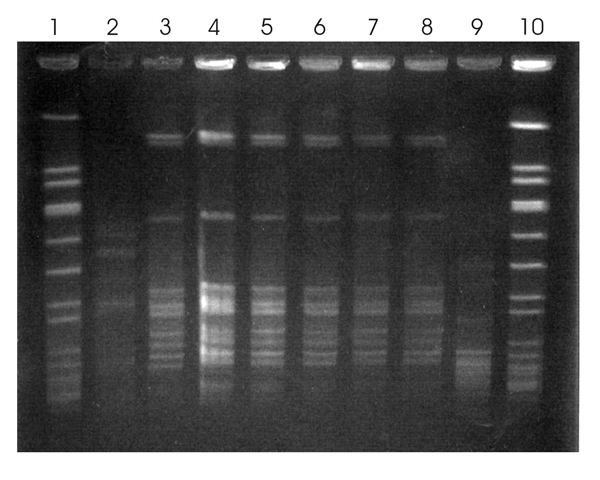Volume 15, Number 1—January 2009
CME ACTIVITY - Research
Sphingomonas paucimobilis Bloodstream Infections Associated with Contaminated Intravenous Fentanyl1
Figure 2

Figure 2. . . Results of pulsed-field gel electrophoresis (PFGE) of Sphingomonas paucimobilis isolates obtained in November 2007. Lanes 1 and 10, molecular weight marker; lanes 2–7, bloodstream isolates from patients 1–6, respectively; lane 8, isolate from contaminated fentanyl; lane 9, unrelated control isolate. Patients 2 through 6 received intravenous fentanyl within 48 hours before S. paucimobilis bacteremia developed and had isolates with a PFGE pattern indistinguishable from that of fentanyl isolates. Patient 1 did not receive intravenous fentanyl and had S. paucimobilis bacteremia with a distinct PFGE pattern.
1Data presented in part at the 18th Annual Meeting of the Society for Healthcare Epidemiology of America; Orlando, Florida; April 6, 2008 (abstract 478).